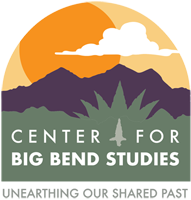Morning AgClips, February 3, 2025, story by Louie Bond
As Texans continue to choose corn as a major food ingredient of choice — happily consuming street tacos and enchiladas and tortilla chips by the ton — research from a new study finds that corn also holds many answers to the unknown stories of the earliest people of this country.
What makes corn so remarkable is that it must be cultivated by human hands. It doesn’t grow naturally, so the earliest farmers intentionally planted seeds from the most robust ears, then stayed nearby to tend and harvest the crop. Bits left behind offer a trail of clues that offer tantalizing additional kernels about human movement 1,000 years ago.
Center for Big Bend Studies (CBBS) Director Bryon Schroeder was part of an international team that published that new study in the journal Cell in December 2024, reporting interesting findings about the eastward movement of maize (aka corn) in the United States a thousand years ago. Ancient genomes from the Ozark rockshelters indicated that the crop entered eastern North America from Mexico at least twice, tracing ancestry across the upland Southwestern states and up from southern Texas.
“The presence of maize in our regions means humans were in contact with groups who had cultivated it,” Schroeder says. “I knew the genetics of maize would bear out that story.”
Schroeder contacted now-retired Bruce Smith, longtime maize researcher, for recommendations. There he found Dr Nathan Wales, from the University of York’s Department of Archaeology.
“He was looking for how maize got into the eastern United States, and I was looking for how it got into Texas — we helped each other out,” Schroeder says. “I sent him 28 samples and he worked with the best preserved.”
The researchers discovered that the maize underwent genetic selection as it moved eastward, particularly through a gene known as waxy1.
“This suggests that farmers 1,000 years ago were not just engaged in planting and harvesting, but in selecting traits that could help in breeding and producing the best quality yield for food, not too dissimilar to farmers today,” a University of York article cites. “Genetic variants in the waxy1 gene affect the stickiness and chewiness of maize, traits that are still valued in some traditional cuisines today.”
According to the report, ancient maize from West Texas shows a different admixture pattern, carrying ancestry from both the US Southwest and Mexican maize, given the placement of the Bee Cave Canyon (700 years BP), Tranquil Rockshelter (690 years BP) and Spirit Eye Cave (2,000 years BP) genomes between these two groups.
“We also showed that maize could only be introduced into eastern North America once humans bred local varieties with the genetic tools to cope with the challenging environment of the region, which goes some way to demonstrating the skills and knowledge of farmers 1,000 years ago,” says Dr Jazmín Ramos-Madrigal, Globe Institute at the University of Copenhagen in Denmark.
Schroeder says this shows that maize is far more ancient in this region than previously imagined. The Trans-Pecos was connected to larger chunks of real estate, but groups adapted this cultivar to local conditions.
“We will keep dating maize — we just found a new site with maize present — because I think it is older than 2,000 years here,” Schroeder says. “Wales and I have discussed a real possibility that maize entered the US multiple times rather than a single entry, and that alternative entry point is probably up the Rio Grande. So, we need to do more genetic work and dating to better understand the longevity of the cultivar in Texas.”


